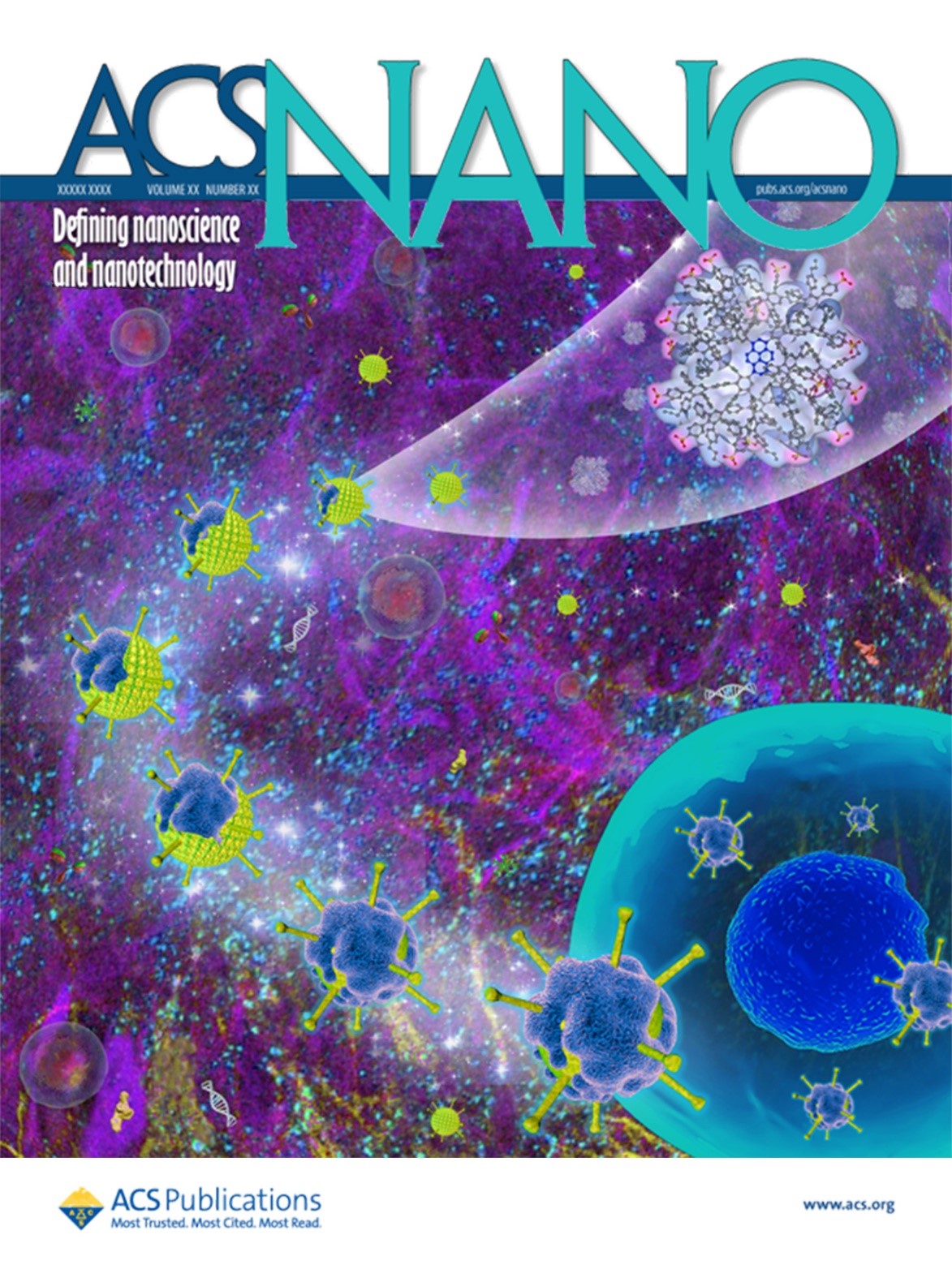

On July 19th, our paper Patchy Amphiphilic Dendrimers Bind Adenovirus and Control Its Host Interactions and in Vivo Distribution was published on ACS Nano(https://pubs.acs.org/doi/10.1021/acsnano.9b01484), which was cooperated by Prof. Yuzhou Wu’s group, Prof. Tanja Weil’s group from the Max Planck institute for polymer research and Prof. Florian Kreppel’s group from the University of Ulm.
Only recently, it has been discovered that the protein corona largely determines the fate of nanoparticles in the blood stream in vivo. Protein surfaces are not homogenous but provide defined amphiphilic patterns. In nature, viruses are among the most intelligent and efficient nanotransporters. Their enormous efficiency is not only depending on their highly specific receptor binding, but they can also utilize blood plasma proteins as shielding corona to enhance their stability and evade the immune system. In clinical trials, human adenovirus 5 (Ad5) is the most frequently used gene transfer vector to date providing high transduction efficiency in both dividing and non-dividing cells and can accommodate large transgene cassettes. However, the clinical applicability of Ad5-based vectors is severely limited by this native protein corona formation, since the absorbed proteins dictate whether the vector can transduce certain cells in vivo and frequently lead to mistargeting and acute toxicity. In addition, while Ad5 in vitro employs the coxsackie–adenovirus cell surface receptor (CAR) and α(v)β3/5 integrins to infect cells, the primary receptor CAR is often not available on target tissue in vivo and tumor cells are often refractory to transduction by Ad5. Therefore, it would be a significant advancement for Ad-based gene therapy if one could engineer an artificial protein-like corona that replaces the natural protein corona, which should shield the vector from neutralizing antibodies and ultimately engineer virus tropism for therapeutic applications.
In order to emulate such distinct surface patterns on macromolecules, rigid spherical synthetic dendrimers (polyphenylene dendrimers, PPDs) were prepared by Prof. Wu’ group, which provides alternating negatively charged sulfonic acid and hydrophobic n-propyl groups (e.g. amphiphilic groups) on their surfaces. They identified an optimal spatial arrangement of these patches on certain dendrimers that enabled their interaction with Ad5. Patchy dendrimers bound to the surface of Ad5 formed a synthetic polymer corona that greatly altered various host interactions of Ad5 as well as in vivo distribution. The dendrimer corona (1) improved the ability of Ad5-derived gene transfer vectors to transduce cells deficient for the primary Ad5 cell membrane receptor and (2) modulated the binding of Ad5 to blood coagulation factor X, one of the most critical virus-host interactions in blood stream. It significantly enhanced the transduction efficiency of Ad5, while also protecting it from neutralization by natural antibodies and the complement system in human whole blood. Ad5 with a synthetic dendrimer corona revealed profoundly altered in vivo distribution, improved transduction of heart and dampened vector sequestration by liver and spleen.
Remodeling the virus surface by precise molecular and supramolecular design provides control over virus–host interactions. Therefore, this progress will ultimately regulate the trafficking and cell uptake of viruses in vivo, one of the holy grails in gene therapy. Moreover, the concept of a bioactive protein-mimicking polymer corona could allow designing improved nanoparticle therapeutics to control their in vivo distribution, which is still one of the major challenges in nanomedicine.
